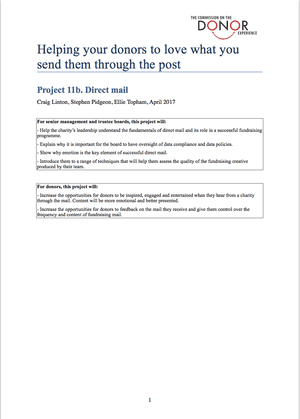CDE project 11b: appendix 1
- Written by
- The Commission on the Donor Experience
- Added
- April 28, 2017
Additional income plus cost savings from a digital print strategy - a direct mail case study from World Vision
A change in strategy in 2012 has meant that World Vision has been able to reverse a significant downturn in direct mail income, as well as making clear cost savings. The case study centres on the birthdays of the children supported by kind sponsors in UK.
These birthdays provide pivotal fundraising opportunities, but the process of sending out a blank card to the sponsor, getting them to sign and return it with a donation, then landing it on the child’s doorstep in time for the birthday, took up to four months and required significant additional staffing six times a year. Staff had to make data selections, organise print through one agency, and through another, co-ordinate the emails arriving both on the same day as the letter and a reminder two weeks later. Six times a year, around 18,000 people needed contact.
And nobody wants to think about somebody’s birthday four months before the date. Donation responses were going down.
A new strategy based on the digital printing of all letters and emails was devised. Every week, the database finds the sponsors of children whose birthdays are 2 months away and fires this data off to the agency Brightsource, along with information about the child whose birthday is coming up. It does that automatically, with nobody looking at it.
A database at the mailing house picks up that data automatically and, from rules given to it, decides the type of card the child might like and the extra asks that World Vision wants to make of the supporter. The system then sends the right information to the print production line to create the personalised mailpack for that supporter. It also sends similar information to an email system to create a personalised email that lands on the same day as the mailpack, with a reminder two weeks later. And, it creates a personalised web page based on the information, with a personalised URL to access it.
When the supporter gets the mailpack, they simply fill in the card and donation form and send them back. Or they can go online to their own web page, choose the design of their card, enter their message and make a donation. That information is then sent to the print line which prints the card, sending it to World Vision for despatch to the field.
This ‘lights out’ process keeps running with no human intervention and the impact on results has been significant. The downturn in income has been dramatically reversed with higher response rates and donation values. Workflow at World Vision has been smoothed and cost savings achieved. The sponsors have a better product at a more appropriate time and each child gets a card on their birthday.
Information kindly supplied by Mark Dibden, Head of Supporter Experience, World Vision


















